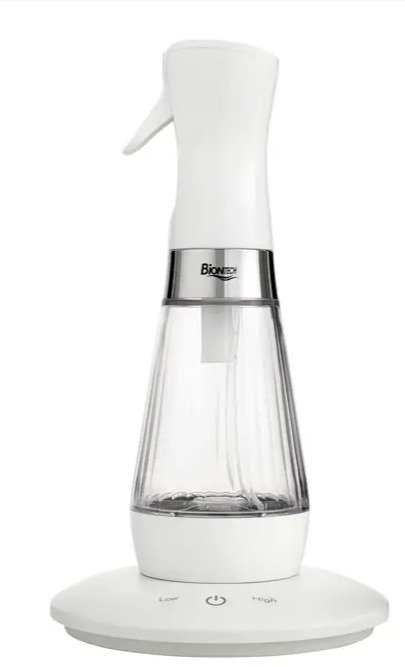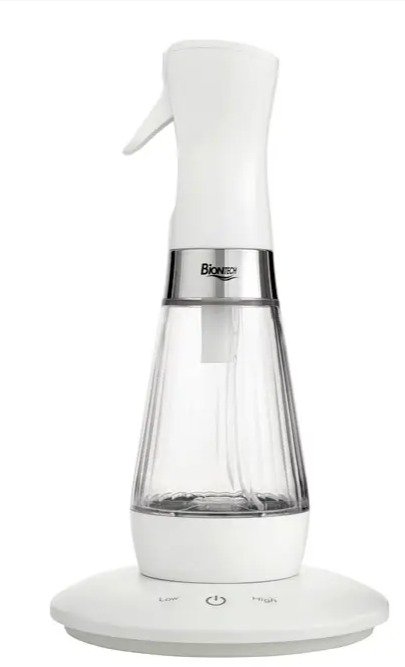
We love our Natural Cleanser. The longer we have it in the home, the more applications we find for it. But many people just don’t understand The Science and Applications of Electrolyzed Oxidizing Water (EOW), So hopefully this article will help.
Electrolyzed Oxidizing Water (EOW) has emerged as a powerful and versatile solution for disinfection and sanitization, thanks to its unique chemical composition and strong oxidizing properties. In this post, we’ll explore the fascinating chemistry behind EOW, the factors that influence its effectiveness, and its real-world applications.
What Is Electrolyzed Oxidizing Water?
EOW is produced through a process called electrolysis, which involves passing an electrical current through water that contains dissolved salts, typically sodium chloride (NaCl). This process alters the chemical structure of the water, creating a solution rich in active chlorine species, such as chlorine gas (Cl₂), hypochlorous acid (HOCl), and hypochlorite ions (OCl⁻). These compounds are highly reactive, making EOW a potent disinfectant.
At the anode (positive electrode), the following reactions occur:
- Water Oxidation: 2H2O(l)→O2(g)+4H+(aq)+4e−2H_2O(l) → O_2(g) + 4H^+(aq) + 4e^-
- Chloride Ion Oxidation: 2Cl−→Cl22Cl^- → Cl_2
- Chlorine gas reacts with water:
Cl2+H2O→HOCl+HClCl_2 + H_2O → HOCl + HCl
The result is a strongly oxidizing solution, with an oxidation-reduction potential (ORP) typically ranging from +600 mV to over +1200 mV. The ORP is a measure of the solution’s ability to accept electrons and is directly related to its disinfectant strength.
Why pH Matters in EOW
The effectiveness of EOW as a sanitizer depends heavily on its pH. This is because the chemical form and sanitizing strength of chlorine species vary with pH levels:
- pH 4.5–6.5 (Optimal Range):
Hypochlorous acid (HOCl) dominates. HOCl is up to 100 times more effective as a sanitizer than hypochlorite ions (OCl⁻), which prevail at higher (alkaline) pH levels. - pH Below 3.0:
Chlorine gas (Cl₂) becomes the predominant form. While still oxidizing, Cl₂ is less effective as a disinfectant and poses health risks due to its volatility.
To achieve maximum sanitizing power and minimize risks, maintaining the pH in the slightly acidic range (4.5–6.5) is critical.
Factors Influencing EOW Effectiveness
Several factors determine the quality and efficiency of EOW production:
- Chloride Concentration:
The source water must contain adequate chloride ions to produce sufficient chlorine species. - Electrolysis Time:
Longer exposure to the electrolysis process allows for greater production of active disinfectants. - Applied Voltage:
The electrical voltage applied to the electrodes affects the intensity of the reactions. - Electrode Configuration:
Mesh electrodes are generally more efficient than solid plate electrodes, as they provide a larger surface area for reactions. - pH Control:
Units that can maintain the pH near neutral are preferred for optimal sanitizing performance.
Types of EOW Generators
EOW generators come in different designs, with the choice of system affecting the quality of the output. The two main types are:
- Batch-Type Generators (No Membrane):
These systems mix the entire solution during electrolysis, producing a single type of water with a controlled pH and concentration of HOCl. They are often preferred for their reliability and ability to produce highly effective EOW without excessive acidity or toxicity. - Flow-Through Systems (With Membrane):
These systems separate the solution into two streams: acidic water and alkaline water. While effective in some contexts, they can complicate pH control, potentially reducing efficiency.
Applications of EOW
EOW’s strong disinfectant properties make it valuable in numerous industries:
- Healthcare:
EOW is used for sterilizing medical equipment, disinfecting surfaces, and wound care, thanks to its ability to kill bacteria, viruses, and fungi. - Food Industry:
It is employed to sanitize food surfaces, equipment, and packaging, ensuring compliance with hygiene standards. - Agriculture:
Farmers use EOW to clean irrigation systems, prevent plant diseases, and sanitize produce without harmful residues. - Water Treatment:
EOW is utilized in wastewater treatment and for disinfecting drinking water systems.
Advantages of EOW
- Eco-Friendly:
EOW breaks down into harmless byproducts, making it an environmentally sustainable disinfectant. - Non-Toxic at Optimal pH:
Unlike harsh chemical disinfectants, EOW is safe for humans and animals when produced and used correctly. - Cost-Effective:
Generators produce EOW on-site, reducing the need for storage and transportation of traditional disinfectants.
Challenges and Considerations
While EOW offers many benefits, there are some challenges:
- Stability:
EOW loses its disinfectant strength over time, requiring immediate use after production. - Health Risks at Low pH:
If the pH falls below 3.0, the formation of volatile chlorine gas poses safety concerns. - Equipment Costs:
High-quality EOW generators, especially batch-type systems, can be expensive upfront.
The Future of EOW
Ongoing research into EOW is focused on improving its production methods, stability, and applications. Innovations in electrode design and generator technology are likely to enhance efficiency and broaden its use in emerging fields such as pharmaceuticals and sustainable agriculture.
Electrolyzed Oxidizing Water is a testament to the power of chemistry in solving real-world problems. By harnessing the potential of chlorine species in a controlled and eco-friendly manner, EOW offers a versatile and effective solution for disinfection across industries. As technology advances, its role in promoting health, safety, and sustainability will only continue to grow.

